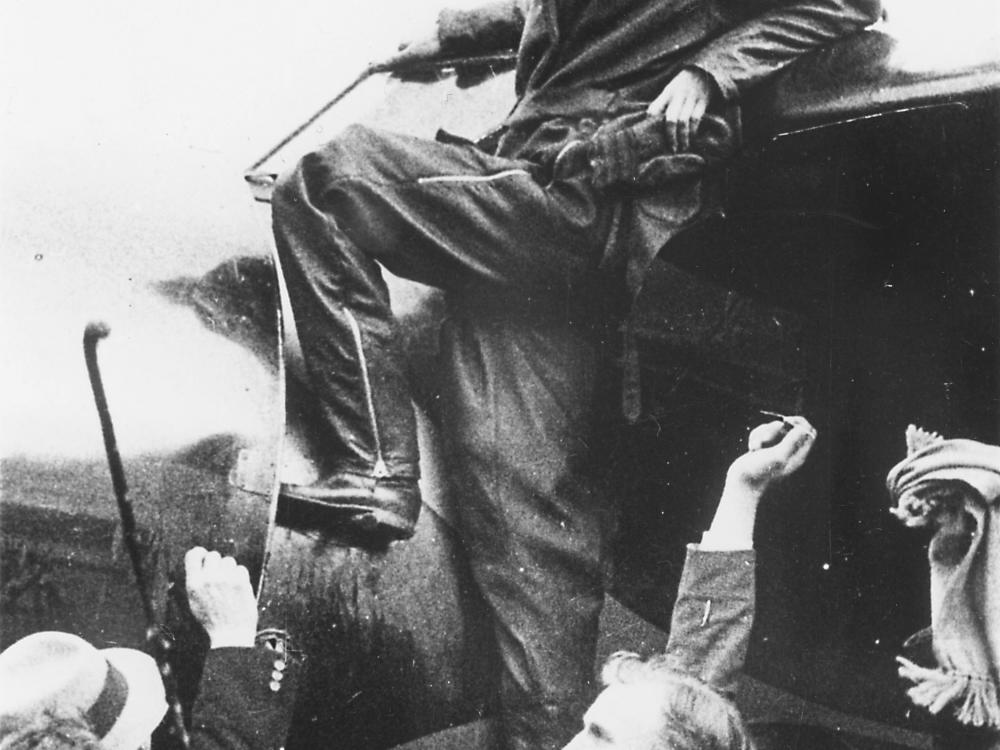
May 20, 2010
By Dorothy Cochrane
On May 20, 1932, that Amelia Earhart set out in her Lockheed 5B Vega to become the first woman to fly nonstop and alone over the Atlantic Ocean. Departing from Harbour Grace, Newfoundland and landing in Londonderry, Northern Ireland about 15 hours later, she also became only the second person to solo the Atlantic, the first being Charles Lindbergh in 1927. It was also her second trip across the Atlantic. Earhart first came to the public’s attention four years earlier, in June 1928, when she made headlines for doing nothing more than riding as a passenger--but she was the first female to do so. And although it didn’t matter to the public that she never touched the controls of the aircraft during the transatlantic flight from Newfoundland to Wales, it mattered to Earhart. After all, she had insisted on and been promised a chance to fly the Fokker F.VII Friendship aircraft. Instead, pilot Bill Stultz flew the entire time, giving Earhart the controls only on the short final hop from Wales to Southampton, England (Lou Gordon was along as co-pilot and mechanic as well).
Why was it so important to her to fly the Atlantic herself? To prove she could do it. She wanted the respect of other pilots, especially the other female pilots of the era. Despite her fame, Earhart knew she wasn’t fully accepted as an accomplished pilot. Since the 1928 flight, she had some modest success setting speed records and placed a respectable third in the 1929 Women’s Air Derby, the first cross-country race for women pilots. She was the first woman to fly an autogyro in 1931 and she set an altitude record in it too, but her otherwise wildly popular cross country tour was marred by two accidents. Earhart , who began flying in 1921 and earned a license in 1923, wanted a career in aviation and she was ably assisted in this goal by George Palmer Putnam, a master promoter and publisher who had arranged the publicity surrounding the flights of Charles Lindbergh and polar explorer Richard Byrd. Together she and Putnam formulated plans for her career: “I make a flight, then I lecture on it.” She wrote about the 1928 flight in her book, 20 hours and 40 minutes, and then traveled all over the country lecturing in support of aviation and careers for women. She wrote about her flights in magazine articles, helped found the women’s flying organization the Ninety-Nines, and did public relations for early airline companies. But she knew her career needed a shot in the arm from an ambitious and high profile flight--and she wanted to fly the Atlantic alone. Other women pilots were nipping at her celebrity heels. In 1928, Louise Thaden was the first woman to simultaneously hold the women's altitude, endurance, and speed records in light planes and in 1929 she won the Women’s Air Derby. Young record-setter Elinor Smith was named one of the three best pilots in the U.S. in 1930 and in 1931, Ruth Nichols held the women’s world speed, altitude, and distance records. Nichols also wanted to solo the Atlantic but her first attempt ended with a crash at her planned takeoff location in Newfoundland in the summer of 1931. Both Earhart and Nichols continued to prepare for transatlantic flights though it was not an acknowledged race between the two friends. But by May 1932, Nichols was not ready. Earhart and her Lockheed Vega, thoroughly prepared and tested by veteran pilot Bernt Balchen, were. Finally, when the weather cleared enough for her to fly to Newfoundland, the timing was perfect for her and George Putnam: May 20, five years to the day after Lindbergh’s epic flight.
Earhart departed Harbour Grace in the evening but soon ran into poor weather. During her 2,026-mile nonstop flight she fought fatigue and nausea, a leaky fuel tank, and a cracked manifold weld that spewed flames out of the side of the engine cowling. Ice formed on the Vega’s wings, causing an unstoppable 3,000-foot descent to just above the waves. When she sighted land she came down into a farmer’s field and asked, “Where am I?” It was Culmore, near Londonderry in Northern Ireland. Although it wasn’t Paris, it was the first solo transatlantic flight by a woman. Amelia Earhart had reached her immediate goals of completing a challenging flight, receiving the respect of her fellow aviators and carving out a career in aviation. She would not rest on those laurels.

We rely on the generous support of donors, sponsors, members, and other benefactors to share the history and impact of aviation and spaceflight, educate the public, and inspire future generations. With your help, we can continue to preserve and safeguard the world’s most comprehensive collection of artifacts representing the great achievements of flight and space exploration.
We rely on the generous support of donors, sponsors, members, and other benefactors to share the history and impact of aviation and spaceflight, educate the public, and inspire future generations. With your help, we can continue to preserve and safeguard the world’s most comprehensive collection of artifacts representing the great achievements of flight and space exploration.